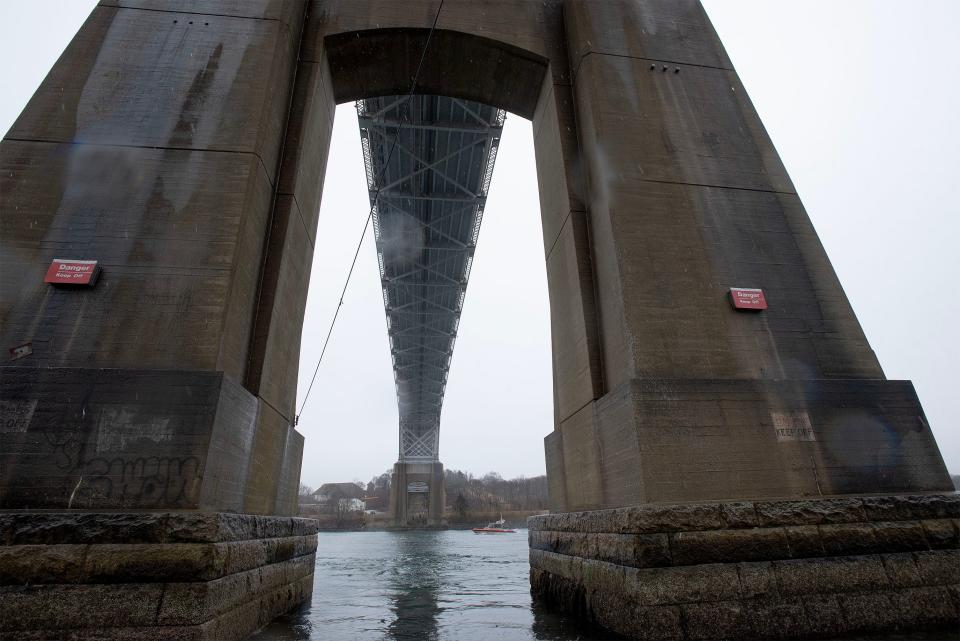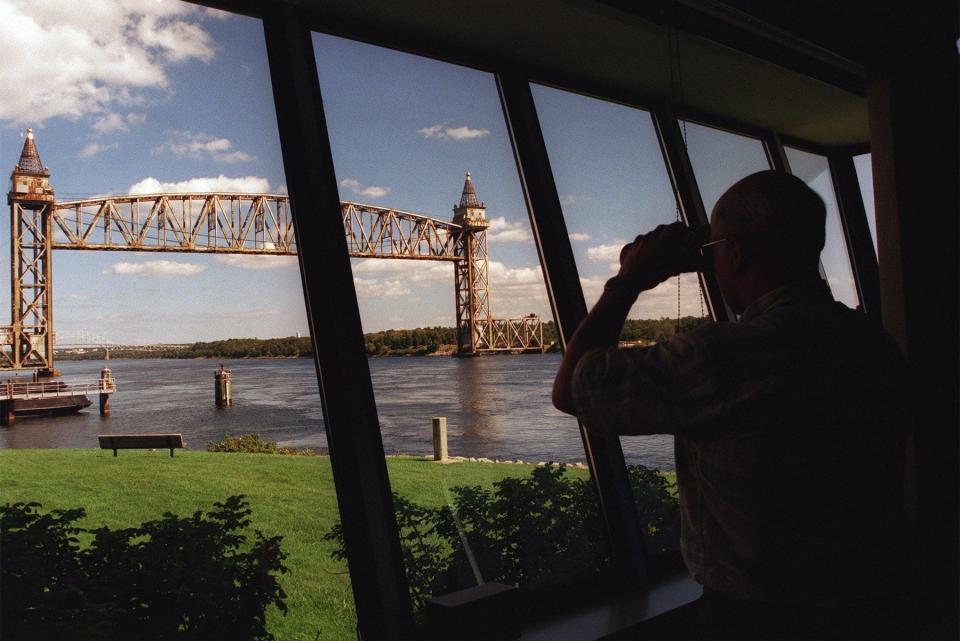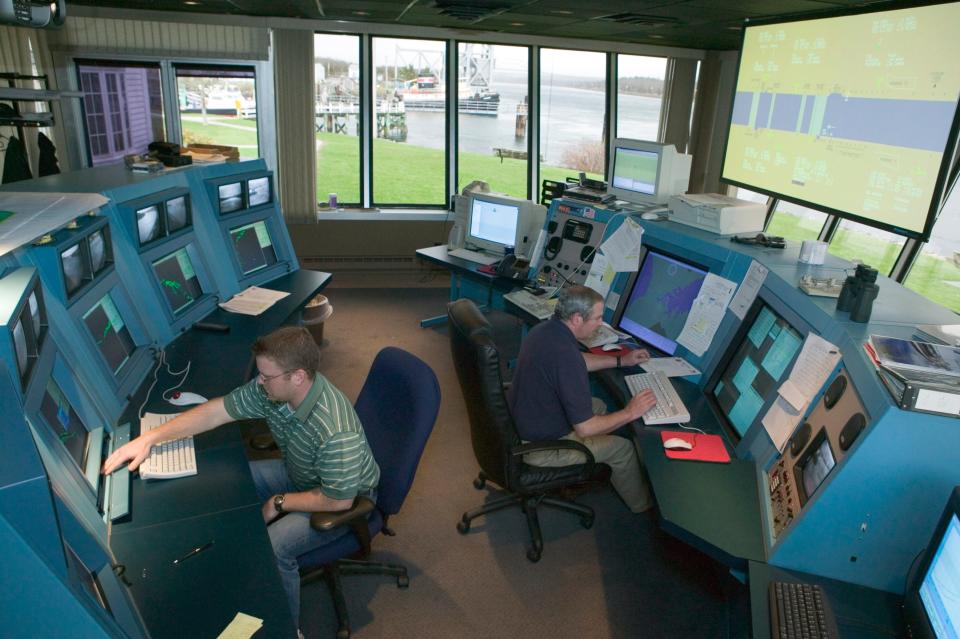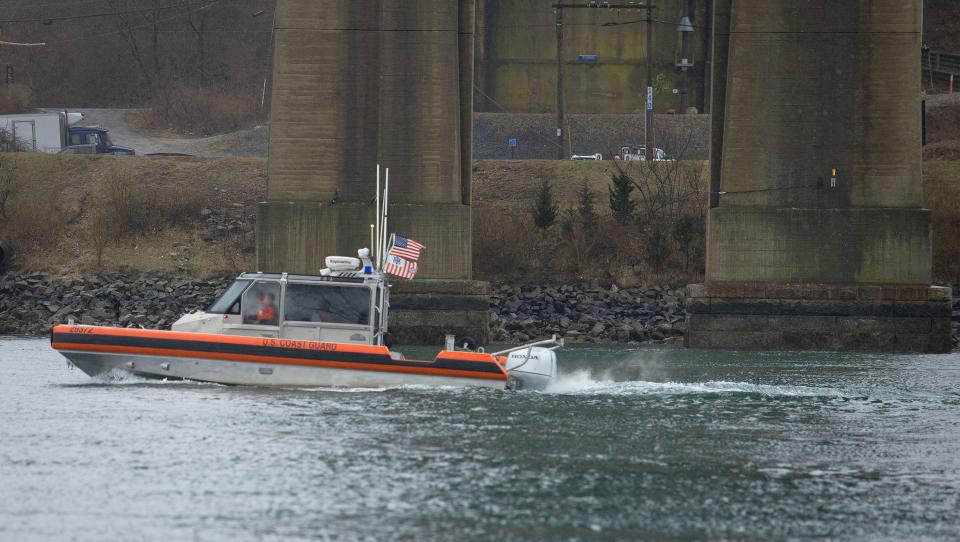Could what happened in Baltimore happen in the Cape Cod Canal? What the experts said.
Following the collapse of the Francis Scott Key Bridge in Baltimore, Maryland on Tuesday morning, officials in Massachusetts have been scrambling to assess the safety and security of the dozens of bridges traversing navigable waterways statewide.
The $4.5 billion replacement of the Bourne and Sagamore bridges looms on the horizon, raising questions about whether a similar collapse could happen to the pair of octogenarian bridges.
The Cape Cod Canal bridges were designed and built in the 1930s by the U.S. Army Corps of Engineers, which still owns and maintains them today. The bridges initially saw one million crossings annually, with that figure shooting up to nearly 38 million today, according to the Cape Cod Commission. That level of traffic is about the same as the Golden Gate Bridge in San Francisco, which is about six times the length and twice the width.

Jonathan Gulliver, the Massachusetts Department of Transportation Highway Administrator, said in a Tuesday press conference the Canal bridges are of a similar design type to the Francis Scott Key but have very different support systems.
“Similar to a number of other bridges that are (over) navigable waterways, the pier — so the structure got hit by that ship in Baltimore — was a pier that was in the navigation channel,” Gulliver said. “My understanding is both the Bourne and the Sagamore, as well as the Tobin, those piers are all outside of the navigation channel, and so a ship would run aground before they hit those piers and caused any structural damage.”
The Tobin Bridge carries Route 1 over the Mystic River, connecting Boston and Chelsea.
Much like the Francis Scott Key bridge, the canal bridges do not have protective fenders sheltering their piers.
What happened at the Francis Scott Key Bridge?
Around 1:30 a.m. on Tuesday, a cargo ship struck a column of the Francis Scott Key Bridge in Baltimore, Maryland, which carried Interstate 695 over the Patapsco River. The bridge collapsed within seconds of the strike.
The ship sent out a "mayday" before the collision and gave officials time to stop cars from driving onto the bridge, according to USA TODAY. As of Wednesday afternoon, crews stopped searching for the construction workers believed to be on the bridge when it collapsed.

Has a ship hit a Cape Cod Canal bridge?
In 2016, a 131-foot-tall Norwegian cruise ship called the Viking Star clipped the railroad bridge in Buzzards Bay, on the western end of the Cape Cod Canal. The vertical lift bridge, which stands 135 feet above the water, was scraped by an antenna atop the cruise ship.
Although some paint was lost, all three Canal bridges — the railroad bridge and, to the east, the Bourne and Sagamore bridges — were inspected after the incident and found undamaged, according to the U.S. Army Corps of Engineers at the time.

'Structurally deficient doesn't mean unsafe'
During a Tuesday meeting with state officials and various news agencies, Gov. Maura Healey said the Cape Cod Canal bridges have been deemed “structurally deficient,” a technical term meaning the bridges are safe to drive and traverse over but still have deteriorations or other flaws.
“Structurally deficient doesn't mean unsafe,” Healey said. “Because what happens is when there is that designation there was work immediately done to ensure safe passage, but it doesn't take away from the fact that we actually need to have these bridges replaced.”
What happened in Baltimore might be an “extraordinary” case, unlikely to occur on the canal, U.S. Representative William Keating, D-Massachusetts, said in an email to the Times.

The most important thing to do now is allow the National Transportation Safety Board and other officials to determine why this specific incident happened and learn how to prevent it from ever happening again, Keating said.
“Then we need to take whatever preventative measures, if there are any determined by the official investigation, and apply them in Massachusetts and across the country.”
Walker Armstrong reports on all things Cape and Islands, primarily focusing on courts, transportation and the Joint Base Cape Cod military base. Contact him at WArmstrong@capecodonline.com. Follow him on Twitter: @jd__walker.
The Cape Cod Times is providing this coverage for free as a public service. Please take a moment to support local journalism by subscribing.
This article originally appeared on Cape Cod Times: How vulnerable are Bourne, Sagamore bridges to a ship strike?

